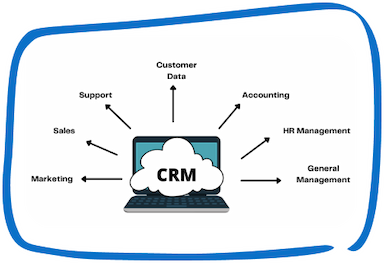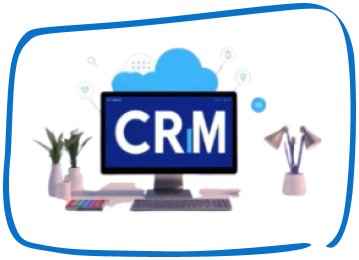ERP software solutions have developed into more than just a tool for expediting operational procedures. It currently serves as both a competitive advantage and a stimulus for company innovation. Keeping up with the latest developments in ERP technology is essential for corporate success as we get closer to 2024-25.
ERP Software facts
- Companies are still switching to cloud-based ERP. According to Statista, the global cloud ERP market is projected to expand at a rate of 13.6% per year and reach $40.5 billion by 2025.
- Artificial intelligence (AI), and machine learning in particular, helps to personalize customer interactions, generate new insights, and optimize business processes.
- ERP is connecting more and more with other technologies, like social media and Internet of Things (IoT) gadgets, to increase automation, improve visibility, and enhance the user experience.
- In the wake of the coronavirus, companies are depending more and more on distributed workforces; therefore, having a solution that can facilitate remote work has become essential.
Revolutionize Your Business with ERP Software
Enhance your business efficiency with our all-in-one ERP software. Automate processes, improve decision-making, and manage your operations seamlessly.
These 9 ERP trends will change how firms operate in the coming year.
1. A greater focus on the modules of financial management
ERP systems are stepping up by improving their financial management modules in response to the complex financial environment of today. There is an increasing trend indicating that real-time financial data access is needed for everything from ledgers and payable accounts to receivables and cash flow analysis. Automated financial processes are becoming commonplace, ranging from payroll processing to VAT calculations. Furthermore, as systems become more user-centric, it becomes simpler for team members who are not in finance to collaborate toward shared financial goals.
Leading suppliers are also concentrating on:
- Predictive financial analytics using artificial intelligence and machine learning
- Putting blockchain technology to use for safe and secure banking
- Financial components that can be customized to meet specific corporate demands
2. Techniques for Cost Management to Combat Inflation
All organizations face difficulties due to inflation, which has an impact on their expansion and budgeting strategies. ERP systems provide a cost-effective solution in this situation by automating procedures and minimizing manual intervention. Furthermore, real-time operational analytics enable businesses to optimize expenditure and get ready for changes in the market, enabling tactics like:
- Finding possible areas for cost savings
- Renegotiating agreements with suppliers
- Optimization of resource allocation
3. Development of Cloud-Based ERP Programmes
Traditional on-site deployments are giving way to more flexible and affordable cloud ERP options. They provide benefits such as:
- Scalability and mobility
- lower expenses for hardware and upkeep
- Improved security protocols, such as two-factor authentication and encryption
- faster schedules for deployment
4. The Rise of Mobile ERP to Enable Work from Anywhere
With the growing popularity of remote work, mobile ERP systems are increasingly indispensable. These frameworks enable:
- Data access at any time and from any location
- Streamlined cooperation via immediate data exchange
- Ability to make decisions in real-time
5. Including AI in Enterprise Resource Planning Systems
In 2024, ERP AI integration is expected to grow significantly. The pairing creates opportunities for:
- Accurate upkeep
- Financial reporting that is automated
- Strategic supply chain administration
- AI-powered customer support
- Fraud detection abilities
6. Customized Resolutions for Sector-Specific Requirements
Businesses are looking for customized features to satisfy specific operational needs, which is making generic ERP solutions less and less common. Industry-specific ERP systems focus on the unique pain points and compliance requirements of specialized industries, such as manufacturing, healthcare, and retail.
7. Using Microservices Architecture in
ERP software can be divided into separate modules thanks to the integration of microservices architecture. The architectural design of ERP systems increases agility, flexibility, and Scalability, and also has low maintenance and update costs.
8. The emergence of “Two-Tier” or hybrid ERP systems
For businesses with multiple locations, hybrid ERP solutions provide a combination of centralized and decentralized systems. This method offers:
- Operational independence for regional business entities
- faster adoption rates of technology
- Integration of third-party applications made easier
- enhanced data uniformity between business divisions
- Improved financial reporting and compliance
9. Using CRM to Improve Customer Relationships
Customer Relationship Management (CRM) features are being progressively integrated into ERP systems to enhance customer satisfaction and loyalty. CRM solutions provide:
- Individualised communications with customers
- smooth mapping of the client journey
- Automation that saves resources
- Integrated marketing and sales tactics
- Increased revenue from devoted customers
Wrapping Up
Keeping up with the most recent ERP trends is essential for organizations to be competitive in the ever-evolving landscape as we head into the 2023–2025 era. Key trends influencing the future of ERP include cloud-based ERP solutions, interaction with emerging technologies, industry-specific customization, and improved user experiences.
Get a Customized ERP Solution for Your Business
Looking for an ERP solution tailored to your industry needs? Get a personalized quote and see how our ERP software can streamline your business operations.
Organizations may maximize the capabilities of their ERP systems, optimize workflows, enhance decision-making, and spur corporate expansion by utilizing these trends. Through the adoption of contemporary ERP systems, agility maintenance, and digital transformation, firms may position themselves at the forefront of innovation and remain competitive in the ever-changing business landscape.
Speak with Our Team!
4.9 Stars
1k+ reviews on






